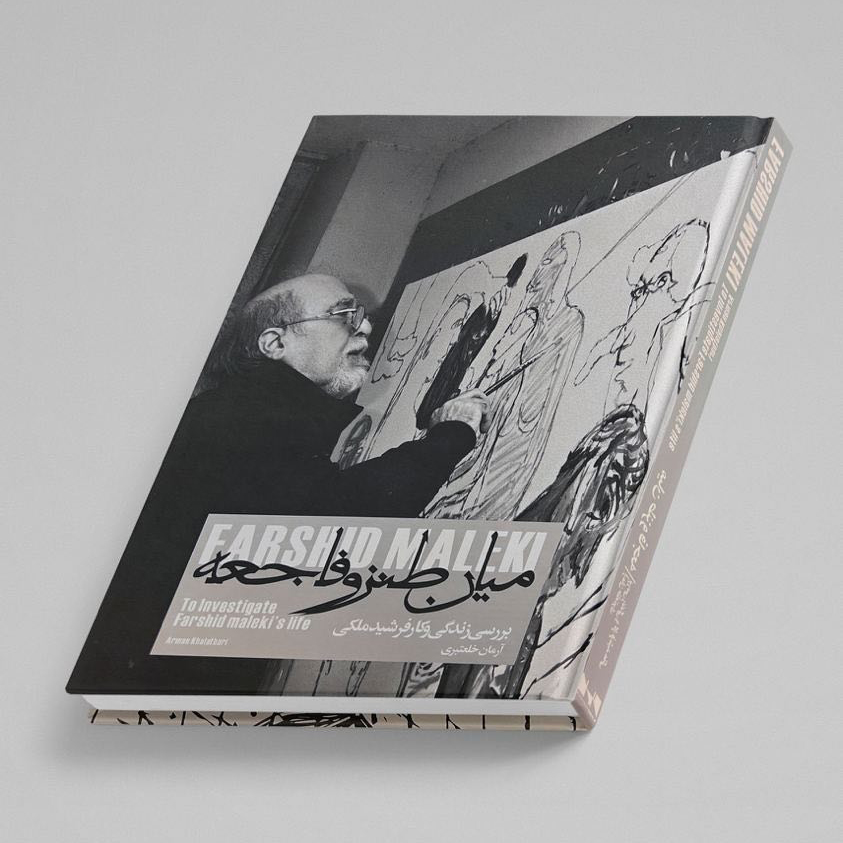Projects PublicationsTo Investigate Farshid Maleki’s Life

Farshid Maleki gained fame as an artist in the last two decades, starting in his sixties. Over the years, the exhibition of his artworks has garnered a positive response. Maleki’s unique style and independent spirit have set him apart from the current mainstream art, making him an attractive figure in the art world. This has helped to create a favorable image of him as an independent artist. However, the artist’s conversations reveal his dissatisfaction with the lack of understanding and the superficial interpretation of his work. Furthermore, decoding his works is challenging due to their complex structure. Additionally, the artist’s outspoken opposition to many criticisms about his work intensifies the difficulty of understanding his art.
Maleki spent most of his life opposing the current ruling system of Iranian art, not because he was ignorant or distant from it. Despite studying at the College of Fine Arts, which was one of the institutions that influenced the acceptable flow of Saqqa-khaneh (a style of contemporary Iranian art), he chose a different path by joining the Ghandriz Gallery (Talar-e Ghandriz). After passing through multiple stages, his desire to pursue native art faded. Following the Islamic revolution, native art regained credibility and attention, leading him to follow a more personal tone.
The personal and intricate atmosphere of the artist’s creations, combined with the limited knowledge of many of the audience about his journey so far, has made it challenging to comprehend his works. This has led to a superficial or stereotypical interpretation of his art by many. However, efforts have been made to gain a better understanding of Maleki’s works. In recent years, numerous exhibitions of his art have shed light on different aspects of his art and life.
The present book is a historical analysis of Farshid Maleki’s life and work. By examining the context of the time periods of Maleki’s works, his creations are presented comprehensively, going beyond a simple description. As a result, some parts of the book may contradict the artist’s personal views. Through a narrative based on historical documents and careful analysis, this book not only presents a picture of Maleki’s life and work but also invites the audience to reflect and follow up logically.